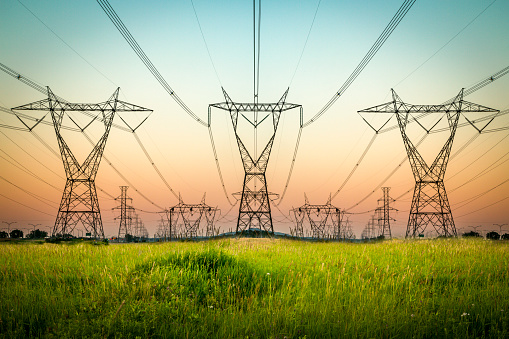albisteak
Designing an AC-DC Converter Circuit
Egilea: ZYG Power Module Time: 2023-5-2
Introduction
AC-DC converters are electronic circuits used to convert an AC voltage to a DC voltage. These circuits are used in a wide range of devices, including power supplies for electronic equipment, battery chargers, and LED drivers. In this article, we will discuss the design of an AC-DC converter circuit.
Design Considerations
The design of an AC-DC converter circuit involves several considerations, including the input voltage, output voltage, output current, and efficiency. The input voltage is the AC voltage that is to be converted to DC. The output voltage is the DC voltage required for the load. The output current is the current that the load requires. The efficiency is the ratio of the output power to the input power.
The design of the AC-DC converter circuit involves selecting the appropriate components, including the diode bridge, smoothing capacitor, and voltage regulator. The diode bridge is used to convert the AC voltage to a pulsating DC voltage. The smoothing capacitor is used to remove the ripples in the DC voltage. The voltage regulator is used to regulate the DC voltage to the required level.
Circuit Diagram
The circuit diagram of the AC-DC converter is shown below.
The circuit consists of a diode bridge, a smoothing capacitor, and a voltage regulator. The diode bridge is made up of four diodes, D1 to D4. The AC voltage is applied across the diode bridge, and the pulsating DC voltage is obtained at the output of the diode bridge.
The smoothing capacitor, C1, is connected in parallel with the output of the diode bridge. The capacitor charges to the peak voltage of the pulsating DC voltage and discharges when the voltage drops. This results in a smoother DC voltage at the output of the capacitor.
The voltage regulator, IC1, is connected to the output of the smoothing capacitor. The voltage regulator regulates the DC voltage to the required level. The output of the voltage regulator is connected to the load.

Component Selection
The selection of the components for the AC-DC converter circuit depends on the input voltage, output voltage, output current, and efficiency requirements. The diodes should be capable of handling the peak voltage of the AC input. The smoothing capacitor should have a suitable capacitance value to provide adequate smoothing of the DC voltage. The voltage regulator should be chosen based on the required output voltage and output current.
Efficiency
The efficiency of the AC-DC converter circuit is an important consideration. The efficiency is the ratio of the output power to the input power. The efficiency can be calculated using the following formula:
Efficiency = (Output power / Input power) x 100%
The efficiency of the circuit depends on the losses in the diode bridge, smoothing capacitor, and voltage regulator. The diode bridge has a voltage drop of about 0.7V per diode, resulting in a total voltage drop of 1.4V. The smoothing capacitor has a leakage current that causes a small loss. The voltage regulator has a dropout voltage that causes a loss. The efficiency of the circuit can be improved by selecting components with low losses.
Conclusion
In conclusion, the design of an AC-DC converter circuit involves selecting the appropriate components, including the diode bridge, smoothing capacitor, and voltage regulator. The design considerations include the input voltage, output voltage, output current, and efficiency. The circuit diagram shows the arrangement of the components. The component selection depends on the requirements of the circuit. The efficiency of the circuit can be improved by selecting components with low losses.
Aurrekoa: Industrial AC-DC Converter: Efficient and Reliable Power Conversion
Hurrengoa: Understanding AC-DC Power Supply: A Comprehensive Guide
informazio garrantzitsua
-
2023-11-18
Efficient and Versatile: Fully Modular 650W Power Supply for Optimal Performance
In today's world, where technology plays an integral role in our daily lives, having a reliable power supply is essential. Whether you are a gamer, a graphic designer, or simply someone who uses a computer for everyday tasks, the efficiency and performance of your power supply can make a significant difference in your overall experience. That is why the fully modular 650W power supply has become increasingly popular among tech enthusiasts and professionals alike. Efficiency is a key factor in evaluating the performance of a power supply. The fully modular 650W power supply is designed to operate efficiently, ensuring minimal power wastage and maximum power delivery to your components. With an 80 Plus Gold certification, this power supply guarantees at...
Ikusi xehetasunak -
2023-4-20
how to wire ac to dc power supply
Introduction: If you intend to power a device that requires DC power supply, but you only have access to an AC power source, then you need to convert AC to DC. This can be done by using an AC to DC power supply. AC to DC power supply conversion is a relatively simple process, but it requires the proper tools and knowledge. In this guide, we will show you how to wire AC to DC power supply step by step. Step 1: Determine the Power Requirements The first step in wiring AC to DC power supply is to determine the power requirements of your device. You need to know the voltage, amperage, and wattage of the device. For example, if...
Ikusi xehetasunak -
2023-8-9
Introducing the SF Series: AC DC Power Supply for Reliable and Efficient Power Delivery
In today's technologically advanced world, a reliable and efficient power supply is crucial for the smooth operation of various devices and systems. Whether it is powering industrial machinery, medical equipment, or computer systems, a stable and high-quality power source is essential. This is where the SF Series AC DC Power Supply comes into play. The SF Series AC DC Power Supply is a cutting-edge solution that has been designed to meet the diverse needs of different industries. With its advanced features and superior performance, this power supply ensures reliable and efficient power delivery, ensuring uninterrupted operations even in the most demanding environments. One of the key features of the SF Series AC DC Power Supply is its versatility. It offers...
Ikusi xehetasunak -
2023-7-20
Introducing the SF Series supplier: AC DC Power Supply for All Your Power Needs
In today's digital and interconnected world, power supply plays a critical role in keeping our devices and systems running smoothly. Whether it is for industrial automation, telecommunications, or consumer electronics, having a reliable and efficient power supply is essential. That is where the SF Series comes into play – a comprehensive range of AC DC power supplies that cater to all your power needs. The SF Series is designed and manufactured by a leading global technology company that specializes in power solutions. With years of experience and expertise in the industry, they have developed a reputation for delivering high-quality and innovative products. The SF Series is no exception, offering advanced features and capabilities to meet the demanding requirements of various...
Ikusi xehetasunak -
2023-7-6
120V AC to 12V DC Converter: Efficient Power Conversion for Electronics
Introduction: In the world of electronics, power conversion plays a crucial role in ensuring the smooth functioning of various devices. One such essential conversion is from 120V alternating current (AC) to 12V direct current (DC). This article aims to explore the significance of a 120V AC to 12V DC converter, its working principle, and its application in efficiently powering a wide range of electronic devices. Understanding the Need for a 120V AC to 12V DC Converter: Most electronic appliances and devices, such as smartphones, laptops, LED lights, and car audio systems, operate on low voltage DC power. However, the power supplied to our homes and businesses is typically high voltage AC power. Hence, a conversion is necessary to ensure compatibility...
Ikusi xehetasunak -
2024-2-27
DC-DC Power Modules: Micro Power, Infinite Possibilities
In modern electronic equipment, DC-DC power modules are small but play a big role. It is like a "heart" that provides stable and efficient power to various devices to ensure their normal and reliable operation. As a professional DC power module manufacturer, we are well aware of its technical charm and market potential. This article will thoroughly explore the multiple advantages, application areas and future development trends of DC-DC power modules, and make you appreciate the infinite possibilities behind this micro power. Fundamentals of DC-DC Power Module A DC-DC power module is an electronic device that converts DC power to another DC power source. It uses switching power supply technology to convert the input DC power into high-frequency AC power...
Ikusi xehetasunak

















